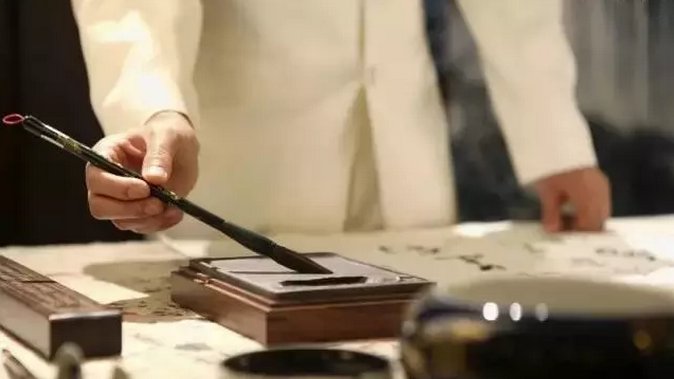Good calligraphy can win a good impression for adults in the workplace today, and it is a way to highlight his personal abilities; it increases competition chips in study or work, and also improves test scores and application scores in written materials. The embodiment of image points can even be respected by more friends, classmates, colleagues, etc., and is a form of improving one's status. Calligraphy practice can fully express the art of Chinese characters. Chinese characters are the most artistic characters in the world. They can be developed and utilized by cleverly combining modern science and technology with the art of Chinese characters. And some people have to write often due to work reasons. They have practiced calligraphy since they were young, and their writing is still ugly even now. They have practiced with several copybooks and other things, and they have written all the descriptions, but when they actually write, they are still ugly. , the writing speed is also very slow when writing. Is there any effective way to practice calligraphy? How to practice calligraphy most effectively?

I believe that many friends have the same problem. They have practiced writing since they were young, and they even bought calligraphy practice books to practice calligraphy. However, the results are still unsatisfactory. So what is the most effective way for adults to practice calligraphy? Where to start?
The editor will give an in-depth analysis of several major learning methods for adults to practice calligraphy:
1. Train your eyes, that is, read the posts carefully
Huang Tingjian, a calligrapher in the Song Dynasty, said: "The ancients did not always rely on copying to learn to write. They often hung the ancient calligraphy works on the walls, looked at them attentively, and then started writing when they saw it correctly." Ouyang Xun of the Tang Dynasty discovered Jin Dynasty's calligraphy works. I couldn't bear to leave the monument written by Dai Suojing, so I simply sat down and read the monument for three days. The more posts you read, the sharper your eyesight will be, and you will know how to write well and what is good about it.
2. To train the brain or the heart
On the basis of careful observation, you should also firmly remember the well-written fan characters in your heart and engrav the shape of them deeply in your brain. Whenever you mention this character, you can immediately think of it. shape on copybook. Be sure to have a clear mind and a clear mind.
3. Practice your skills
The purpose of eye training and brain training is to figure out how to write characters. The mind can think of the best effect of writing, but the hand may not be able to write the best effect, because the brain may not be able to direct the hand, and the hand may not be able to direct the pen. Practicing hands is to achieve the state where mind and hand are consistent, and hand and writing are consistent, so practicing hands is also crucial. Hand training mainly involves practicing finger strength, wrist strength and hand feel. Until your hand can easily control the pen, you can go fast when you want, go slow when you want, light when you want, light when you want, heavy when you want, and you can write whatever effect you want.
4. Practice structure
Because the key to practicing calligraphy is to master the structure of characters. The structure of a character refers to the length ratio of the strokes of the character and the interpenetrating and avoiding relationships between the strokes. If you cannot grasp the structure of Chinese characters, no matter how you modify or beautify the strokes of the characters, it will become an ugly superfluous thing, which will become more and more ugly. Therefore, mastering the structure of characters and writing bold characters well are the key and foundation for practicing all calligraphy well.
5. Practice your strokes
1. Point and move the pen from the upper left to the lower right. There is a process of moving the pen. Note that "points" also have length and cannot be combined into dots.
2. Horizontally, move the pen equally from left to right. The key is to "horizontally be flat", not one end high and the other low, or the strokes should be wavy. Control the length according to the font shape of the square font, not too short or too long.
3. Vertically, move the pen vertically from top to bottom. The key is that "the vertical line must be straight", not skewed to the left or right, let alone written as a vertical hook. Control the length according to the font shape of the square font, not too short or too long.
4. For strokes, move the pen from the upper right to the lower left. Do not write dot strokes or horizontal strokes.
5. When folding and writing with a folding pen, the folding corners should be square rather than round. Don't make a big break at the corner, and write it as two obtuse angles off the shoulder, but write it as a right angle.
Suggestions for adults to practice calligraphy:
Find a regular script calligraphy book. I recommend "Jiucheng Palace" by Ouyang Xun of the Tang Dynasty or "Yan Qinli Stele" by Yan Zhenqing. Follow the above-mentioned calligraphy practice method, starting from horizontal drawings, first practicing strokes, then practicing structure, and finally practicing composition, step by step. , insist on writing for one to two years, and try to make your handwriting the same as that on the copybook. If you don't like the handwriting, take it out separately and practice it over and over again. Even if you don't find a teacher, you can make great progress by practicing this way for one or two years. It will definitely be very different from scribbling on your own.








